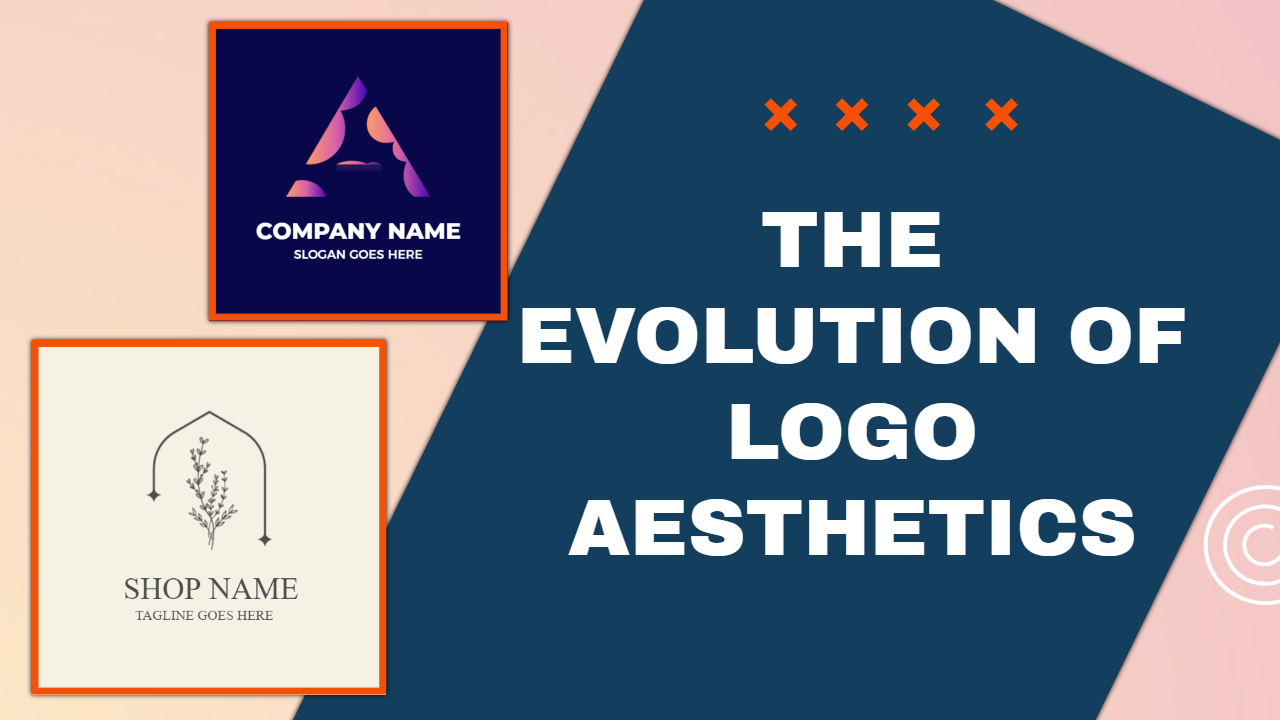Logos created using logo creator are often underestimated in their significance, which serves as the visual cornerstone of a brand. They encapsulate the essence of a company, product, or service, playing a pivotal role in establishing brand identity. This article embarks on a journey through time, exploring the evolution of logo aesthetics from ancient symbols to the futuristic designs that may shape our visual landscape.
Ancient Symbols and Origins
The origins of logos can be traced back to ancient symbols used by civilizations to represent various trades and activities. These early symbols, simple as they may have been, laid the foundation for the visual language of logos.
Early Logo Designs
Moving into the medieval period, logos began to take more recognizable forms, particularly in the context of trade and craftsmanship. Merchants and guilds used distinctive symbols to mark their goods and establish trust with consumers.
Rise of Corporate Identity in the 20th Century
The 20th century witnessed a transformative shift in logo design with the rise of corporate identity. Logos evolved beyond mere symbols, becoming integral components in shaping a company’s public image. Brands like Coca-Cola and Ford pioneered this era, creating timeless logos that remain iconic to this day.
The Iconic Logos of the 20th Century
As we delve deeper, it’s crucial to analyze the logos that became cultural landmarks. Nike’s swoosh, Apple’s bitten apple, and McDonald’s golden arches are not just symbols; they are cultural phenomena that have influenced consumer behavior and shaped brand perceptions.
Minimalism Takes Over
The late 20th century marked a significant shift towards minimalism in logo design. Companies recognized the power of simplicity, and logos like the Nike swoosh demonstrated that a minimalist approach could be equally, if not more, impactful.
Digital Revolution and Responsive Logos
The digital revolution posed new challenges for logos. With the advent of websites, mobile apps, and various digital platforms, logos needed to be responsive and adaptable. This era birthed the concept of responsive logo design, ensuring logos maintain their integrity across different mediums.
Customization and Personalization
In recent years, logos have become more personalized. Brands are now crafting logos that reflect their values and resonate with their target audience on a personal level. This shift has proven to foster deeper connections and brand loyalty.
Color Psychology in Logos
Colors play a vital role in logo design, evoking emotions and influencing consumer perception. Brands strategically use color psychology to convey specific messages. For instance, red often signifies energy and passion, while blue conveys trust and reliability.
Logo Animation in the Digital Age
As technology advanced, logos evolved from static images to dynamic, animated sequences. Animated logos are now a common sight, enhancing brand storytelling and creating memorable visual experiences for consumers.
Futuristic Designs and Technology
Looking ahead, the future of logo aesthetics is intertwined with technology. Artificial intelligence and virtual reality are poised to play significant roles in shaping logos that adapt to changing consumer preferences and technological landscapes.
The Importance of Versatility
In a world where brands interact with consumers across various platforms, the versatility of logos is paramount. Successful brands ensure that their logos maintain consistency while adapting to diverse mediums, from social media profiles to physical merchandise.
Case Studies: Successful Logo Redesigns
A closer look at successful logo redesigns provides valuable insights for designers. Companies like Starbucks and Mastercard have navigated the delicate balance of refreshing their image while preserving the essence of their brand.
Crafting Timeless Logos
Creating a timeless logo requires a delicate blend of contemporary trends and enduring design elements. Timeless logos withstand the test of time, avoiding the pitfalls of becoming dated or irrelevant.
User Experience and Logos
In the digital age, logos play a pivotal role in user experience and interface design. Well-crafted logos contribute to a cohesive and engaging brand presence, enhancing the overall user experience.
Cultural Influences on Logo Design
Globalization has made cultural considerations essential in logo design. Successful brands navigate diverse cultural contexts, adapting logos to resonate with specific audiences without losing their global appeal.
Now that we’ve explored the evolution of logo aesthetics, let’s jump to the conclusion.
Conclusion
The evolution of logo aesthetics is a dynamic journey reflecting the ever-changing landscape of design, technology, and consumer preferences. From ancient symbols to futuristic designs, logos remain powerful tools for brand communication. Designers, in embracing the future, must find the delicate balance between adaptability and creativity, considering historical and cultural contexts.
FAQs
What makes a logo timeless?
Timeless logos possess enduring design elements that transcend trends, ensuring relevance across generations.
How do colors in logos affect consumer perception?
Colors evoke specific emotions, influencing how consumers perceive and connect with a brand on a subconscious level.
Why is logo versatility important?
Logo versatility ensures consistent brand representation across diverse platforms, contributing to a unified brand identity in the digital age.
What role do animated logos play in branding?
Animated logos add a dynamic dimension to brand storytelling, capturing audience attention and enhancing brand recall.
How can brands adapt logos to diverse cultural contexts?
Adapting logos to diverse cultural influences involves a nuanced understanding of local nuances and preferences, ensuring resonance with specific audiences.
Also, read:




